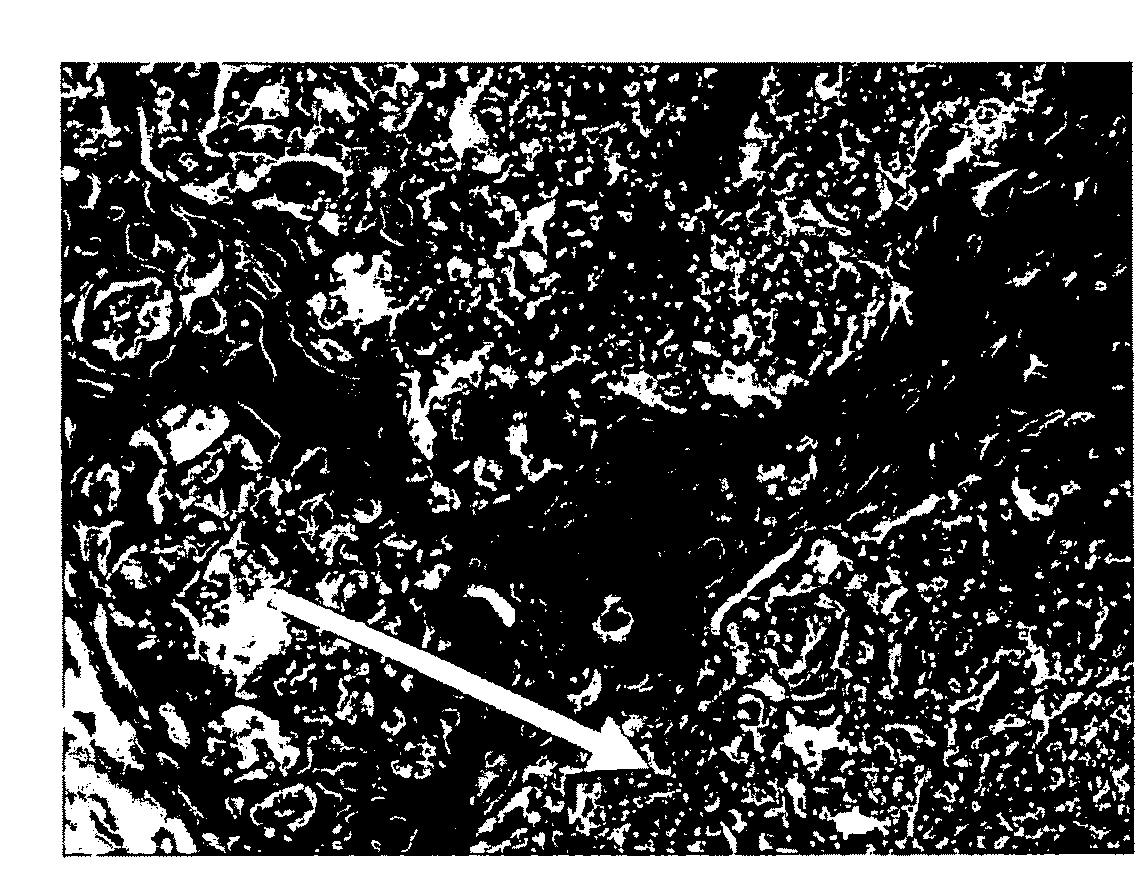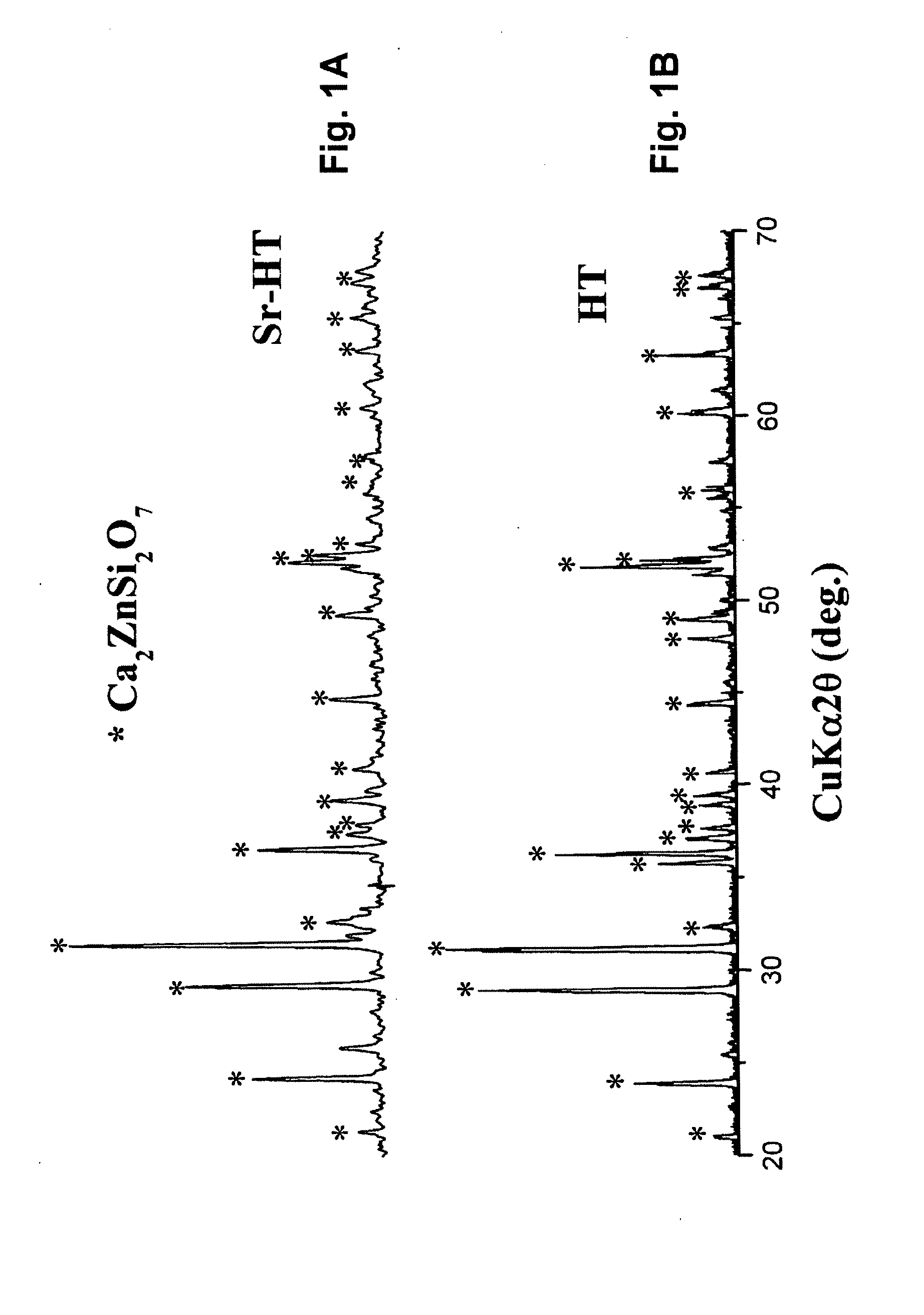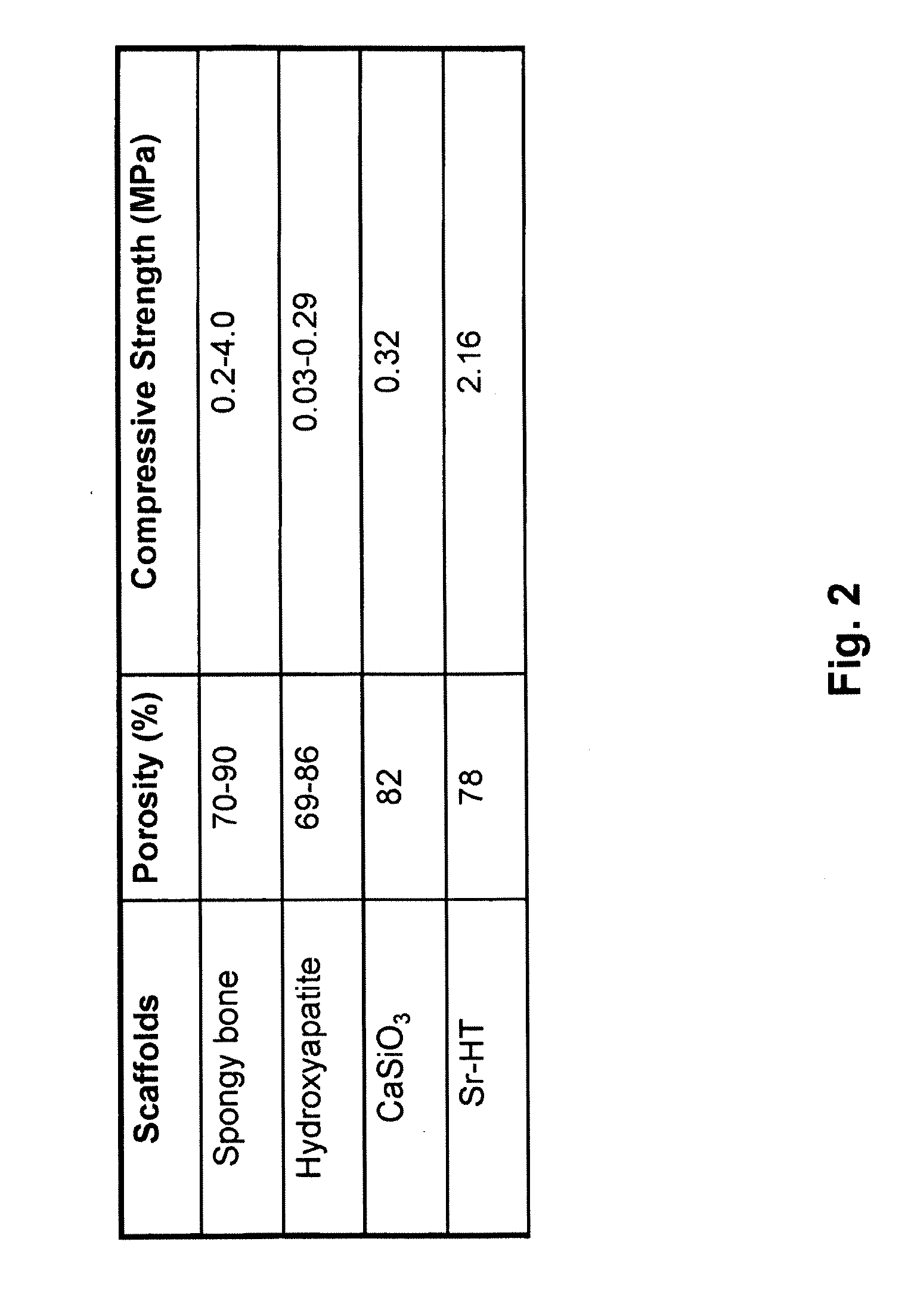Biocompatible material and uses thereof
- Summary
- Abstract
- Description
- Claims
- Application Information
AI Technical Summary
Benefits of technology
Problems solved by technology
Method used
Image
Examples
example 4
Strontium doped Hardystonite (Sr0.1Ca1.9ZnSi2O7) was synthesized by the sol-gel process using tetraethyl orthosilicate ((C2HSO)4Si,TEOS), zinc nitrate hexahydrate (Zn(NO3)2.6H2O), strontium nitrate (Sr(NO3)2) and calcium nitrate tetrahydrate (Ca(NO3)2.4H2O) as raw materials. Briefly, the TEOS was mixed with water and 2M HNO3 (mol ratio: TEOS / H2O / HNO3=1:8:0.16) and hydrolyzed for 30 minutes under stirring. Then, the Zn(NO3)2.6H2O, Sr(NO3)2 and Ca(NO3)2.4H2O were added into the mixture (mol ratio: TEOS / Zn(NO3)2.6H2O / Sr(NO3)2 / Ca(NO3)2.4H2O=2:1:0.1:1.9), and reactants were stirred for 5 hours at room temperature. After the reaction, the solution was maintained at 60° C. for 1 day and dried at 100° C. for 2 days to obtain the dry gel. The dry gel was ground and transferred into a corundum crucible and calcined at 1200° C. for 3 hours, respectively.
Strontium doped Hardystonite (Sr0.1Ca1.9ZnSi2O7) was prepared and tested for mechanical strength and chemical stability, and demonstrates supe...
PUM
| Property | Measurement | Unit |
|---|---|---|
| Fraction | aaaaa | aaaaa |
| Pore size | aaaaa | aaaaa |
| Angle | aaaaa | aaaaa |
Abstract
Description
Claims
Application Information
 Login to View More
Login to View More - R&D
- Intellectual Property
- Life Sciences
- Materials
- Tech Scout
- Unparalleled Data Quality
- Higher Quality Content
- 60% Fewer Hallucinations
Browse by: Latest US Patents, China's latest patents, Technical Efficacy Thesaurus, Application Domain, Technology Topic, Popular Technical Reports.
© 2025 PatSnap. All rights reserved.Legal|Privacy policy|Modern Slavery Act Transparency Statement|Sitemap|About US| Contact US: help@patsnap.com



